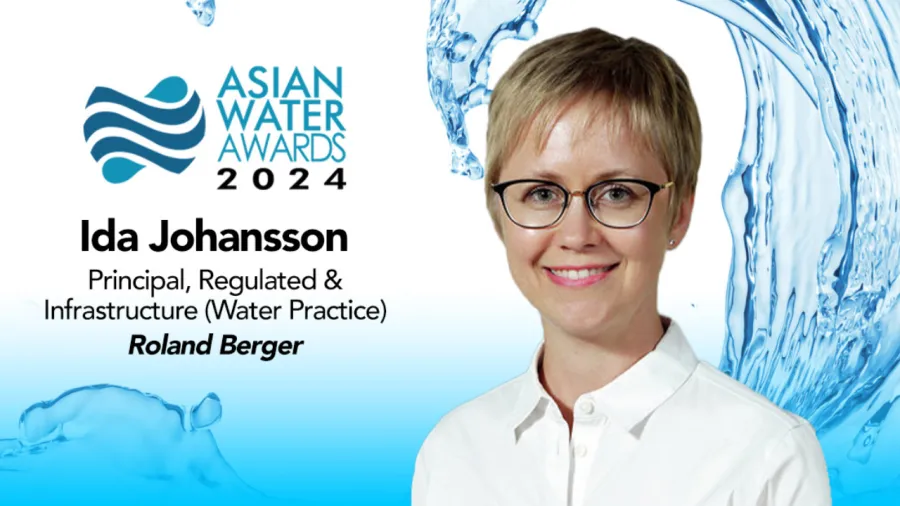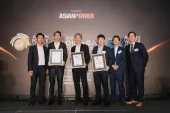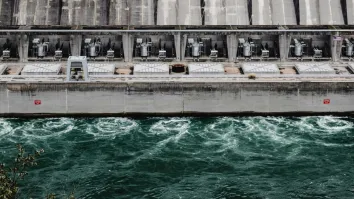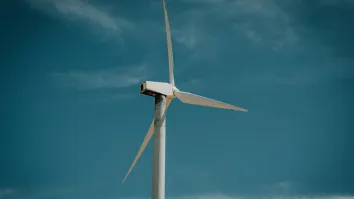
Roland Berger Principal: Investing in innovative water solutions addressing critical water challenges a necessity for Asia's future
This comes amidst ongoing efforts to close Asia's significant infrastructure gap in both water and wastewater, whilst simultaneously increasing resilience to the impacts of climate change.
Despite unique challenges facing Asia's water industry in the period of climate change and rapid digital innovation, organisations in Asia's water industry have been proactive in implementing resilient water management strategies. This not only helps them navigate the operational difficulties but also opens up opportunities for more successful operations.
They are guided by industry experts who have been observing trends in the sector and accelerating their growth amidst a tough operational environment. Amongst these experts is Ida Johansson, a Principal at management consulting company Roland Berger, where she is currently based in Singapore.
Having more than 10 years experience in providing business advisory services to water companies, Johansson possesses a know-how of a broad range of water topics, from water and wastewater treatment to reuse and desalination across municipal, industrial and commercial sectors, having served multinationals, technology companies and investors. She focusses on leading strategy projects for companies seeking to accelerate their growth, especially in emerging markets of Southeast Asia.
Johansson sits down with the Asian Water Awards as part of its esteemed judges for this year’s edition to talk about the drivers of growth for Asia's water sector, the role of technology in transforming water and wastewater treatment, effective strategies for growth in the water industry, and what the industry’s future looks like.
What unique challenges and opportunities do you see in the water sector across Asia, particularly in emerging markets of Southeast Asia?
The water sector presents several unique challenges and opportunities for the region. One of the primary challenges is closing the infrastructure gap, particularly in terms of ensuring access to clean drinking water, as well as collecting and treating sewage. Whilst significant progress has been made in connecting urban areas to drinking water, there is still a lag in rural areas and sewage collection, leading to environmental pollution and health hazards.
Of course, climate change presents another significant challenge, with increased flooding risks being a major issue in Southeast Asia. Flooding poses risks to water infrastructure and can result in water contamination and disruptions in supply. In fact, it is estimated that the region could lose up to 11% of its GDP by 2100 if climate change is not addressed. Additionally, certain regions, such as India and Northern China, experience water scarcity, further exacerbating the challenges faced by the water sector. The degradation in water quality of both surface and groundwater is another concern that needs to be addressed and is exacerbated by changes in weather patterns.
Despite these challenges, there are also opportunities in Asia’s water sector. The increasing demand for clean water and improved sanitation services presents opportunities for investment in infrastructure development. Furthermore, the impact of climate change necessitates the adoption of resilient water management strategies and the development of technologies and practices that can mitigate the effects of flooding and water scarcity.
To capitalise on these opportunities, it is important for companies to invest in the development and scaling of innovative water solutions. Collaboration between public and private sectors can also play a crucial role in addressing the challenges. Whilst there is a proven private sector involvement in markets such as China, Philippines, Vietnam and Indonesia, significant barriers exist including weak regulatory public private partnership (PPP) frameworks, lack of contractual experience in managing PPPs and low bankability as a result of low tariffs. Hence, financial support and incentives from governments and international organisations can help bridge the funding gap faced by water utilities and encourage investment in sustainable water infrastructure.
How do you perceive the role of technology in transforming the water and wastewater treatment landscape in Asia?
Technology is a key enabler within the water and wastewater treatment landscape; supporting utilities and industries to address environmental challenges and improve the efficiency, effectiveness, and sustainability of water and wastewater treatment processes. However, the water sector tends to be risk-averse, which results in a preference for proven technologies, especially amongst utility clients. This can make it more difficult for new innovations to gain a foothold.
One area where technology is making a significant impact is in smart water management. The use of sensors, Internet of Things (IoT) devices, and data analytics allows for real-time monitoring and control of water and wastewater systems. This enables optimised resource allocation, early detection of leaks or malfunctions, and improved operational efficiency. Whilst this focus on smart water solutions is more prominent in mature markets such as Japan, Korea, and Singapore, large utilities and those run by private operators in emerging countries in Asia are also embracing these technologies.
Advanced treatment processes, such as membrane filtration, are also transforming the water and wastewater treatment landscape. Membrane technologies, including ceramic membranes, are challenging traditional polymeric membranes and media-based filtration technologies. These advanced processes effectively remove contaminants, resulting in higher-quality treated water and reduced environmental impact.
Furthermore, decentralised treatment systems, such as modular and containerised plants, are gaining popularity in Asia. These systems offer flexibility, scalability, and cost-effectiveness, making them suitable for remote or rapidly growing areas. The use of decentralised treatment systems allows for more efficient and localised treatment of water and wastewater, addressing the specific needs of different regions.
What are the key factors driving growth and innovation in the Asian water sector, and how can companies position themselves to capitalize on these trends
There are several factors driving growth in different segments of the water market, although many factors indirectly link back to climate change.
For instance, the increased focus on net-zero targets is encouraging utilities to adopt equipment and digital technologies to reduce their energy consumption. This includes energy-efficient pumps and emerging biological treatment solutions like membrane-aerated biofilm reactors. Similarly, interest in water reuse is growing as a means of ‘doing more with less,’ particularly as a means of mitigating water risk. This trend is leading to innovation in dissolved solids removal. The development of membrane technologies, such as the use of 3D printing technology, 'super filtration membranes,' a new class of products between nanofiltration and ultrafiltration, and ceramic membranes is improving the quality and efficiency of these treatment processes.
Water now sits at the forefront of the conversation on climate change and more governments are enacting stricter water management and discharge requirements. This is driving the need for infrastructure upgrades and the adoption of zero liquid discharge systems in regions such as India and China to address water pollution from industries such as textiles, tanning, pharmaceuticals and distilling. Moreover, ESG responsibility is also driving advanced technology adoption and innovation in Southeast Asia. Global multinational corporations (MNC) have strict in-house effluent discharge standards and strong commitments to reduce water intensity by 2030 and further by 2050. Their local plants based in Southeast Asian countries are required to comply with global standardised discharge limits, pushing forward the adoption of advanced treatment technologies such as advanced oxidation technology and membrane filtration technology. MNCs operating in Southeast Asia also attract attention and concerns from local communities and environmental groups, hence wastewater quality needs to be properly monitored using loT and smart technologies.
Lastly, the significant economic impact of flooding in Asia also creates opportunities for both mitigation and adaptation solutions, such as nature-based or ‘green’ infrastructure. Water scarcity, particularly in regions like India, is leading to closer monitoring of water withdrawals, especially groundwater abstractions, which opens more opportunities for smart metering, monitoring, and wastewater reuse solutions.
In your experience leading strategy projects, what are some effective strategies for water companies looking to accelerate their growth in emerging markets
One of the best parts of my work is working alongside water companies to accelerate their growth in emerging markets in ways that are both financially and environmentally sustainable.
Firstly, it is crucial for leaders to understand the local customer needs in each market, as they can vary significantly – with unique stakeholder groups. By gaining a deep understanding of the specific requirements and challenges faced by customers in each market and of the overall operating environment, water companies can tailor their products and services to meet those needs effectively.
Furthermore, a comprehensive understanding of the local regulatory environment is essential. This knowledge not only helps companies navigate the regulatory landscape but also enables them to identify opportunities that arise, such as from stricter wastewater discharge requirements or other regulatory changes. Additionally, understanding how regulations impact the process of setting up or expanding businesses is crucial to overcome potential barriers to entry, such as local content requirements in specific markets such as Indonesia.
Another critical area for success is identifying the right local partners. This includes finding suitable sales representatives, distributors, pilot partners, early adopters, or financiers who have a deep understanding of the local market and can facilitate growth. Collaborating with local partners can provide valuable insights, access to networks, and help establish a strong presence in the market.
Lastly, careful consideration of the business and delivery model is essential. There is a growing trend towards modular solutions in the water sector, with an increasing demand for Water-as-a-Service, particularly in the industrial sector. Municipalities are also seeking cost-effective solutions. By designing business and delivery models that align with these trends, water companies can position themselves to meet the evolving needs of the market and accelerate their growth in emerging markets.
How do you see the future of the water sector in Asia over the next 5 to 10 years?
Over the next five to ten years, I think we will see continued progress in closing Asia's infrastructure gap in both water and wastewater management. This will likely involve the implementation of a mix of centralised and decentralised infrastructure solutions, supported by smart technologies to optimise processes. The improvement in infrastructure will greatly benefit the population in Asia, leading to improved access to clean water and better sanitation facilities.
However, the region will also face significant challenges due to the impact of climate change. Countries such as India and China will experience worsening water scarcity, whilst flooding occurrences will become more frequent across the region. This will necessitate a rethinking of investment priorities, with a greater emphasis on adaptation solutions.
I predict and hope we will see increased collaboration between governments, corporates, utilities, NGOs, and community organisations to address these shared water challenges and to realise the shared benefits. The responsibility for managing water resources cannot be solely placed on utilities, and collective efforts will be required to ensure sustainable water management.
As a judge at the upcoming Asian Water Awards 2024, what are the key criteria you will be looking for in award submissions?
There are several key criteria that I will be looking for when assessing submissions. Firstly, I will be assessing the extent to which the solutions presented address true customer problems and meet their needs. It is important that the solutions demonstrate a clear understanding of the challenges faced by customers in the water sector and provide effective and innovative solutions to address those challenges.
Secondly, I will be evaluating the suitability of the solutions for the specific purposes and conditions of the emerging markets in Southeast Asia. Applicants need to demonstrate that their solutions are adapted to the unique characteristics and requirements of local markets, including factors such as local regulations, infrastructure gaps, and the socio-economic context of the region. That can be demonstrated through successful reference or demonstration projects where they showcase the improved performance of their technology and bring impact to the customers.
Lastly, I will be looking for unique and differentiating aspects in the submissions. This could be in the form of technological innovations, novel business models, or innovative go-to market strategies. The solutions should stand out from the competition and demonstrate a distinct value proposition that sets them apart.



















 Advertise
Advertise






